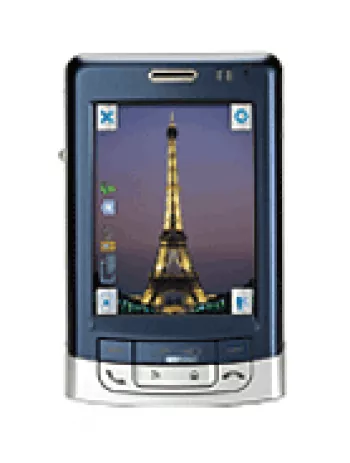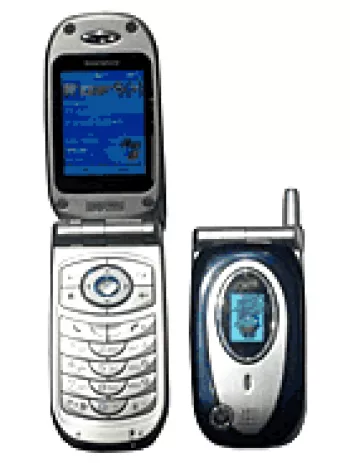
Overview
The Mitac MIO A702 is a pioneering device released in September 2007, offering a combination of smartphone and GPS capabilities that were quite advanced for its time. The device targets users who desired both communication tools and navigation capabilities in a single compact unit. Its release came at a time when mobile technology was rapidly evolving, and it stood out with specific features and design elements indicative of Mitac's innovative approach.
Design and Build
The MIO A702 is characterized by its practical design, measuring 110 x 57.5 x 16.5 mm and weighing 148 g, providing a sturdy feel in the user's hand. The build accommodates a Mini-SIM card, offering standard GSM connectivity. Though its proportions may seem bulky by today's slim standards, during its release, it was quite competitive. The tactile feel and overall robustness suggest Mitac's focus on durability and functionality.
Display
The device features a 2.7-inch TFT resistive touchscreen that supports 65K colors, with a resolution of 240 x 320 pixels. Although modest, this display was adequate for executing its primary functions, particularly for navigation and basic mobile tasks. Given its approximate screen-to-body ratio of 35.7%, the display was not full-screen by contemporary standards, implying more emphasis on hardware buttons and functional design.
Operating System and Performance
The Mitac MIO A702 runs on Microsoft Windows Mobile 6.0 Professional. This OS was synonymous with business and enterprise solutions at the time, providing a structured environment for task management, email, and office apps. It operated with a TI OMAP 850 chipset and a 200 MHz ARM926EJ-S CPU, a configuration offering efficient performance for standard applications and the included navigation tools.
Memory and Storage
With 64MB of RAM and internal storage that varied from 256MB to 2GB depending on the region, the MIO A702 offered microSD slot expansion. This flexibility was crucial for users looking to store maps and additional applications without compromising the device's basic functions. The memory provisions, though limited by modern benchmarks, were consistent with early smartphone capabilities.
Camera
The device is equipped with a single 3.15 MP rear camera featuring autofocus and an LED flash. This setup was satisfactory for capturing basic photos and videos, meeting the needs of users at a time when mobile photography was just beginning to gain traction. The absence of a front-facing camera reiterates its primary focus on tool functionality over multimedia.
Battery Life
The removable Li-Ion 1130 mAh battery offered up to 200 hours of standby time and 4 hours of talk time. This battery life was competitive in its era, effectively supporting the power consumption of both the smartphone elements and GPS functionalities. It allowed users to rely on the device throughout the day with moderate use of its diverse features.
Connectivity
The MIO A702 supports Wi-Fi 802.11 b/g, Bluetooth 2.0, and GPS with SiRF Star III chipset, but it lacks a radio and a 3.5mm jack. The connectivity options reflect its positioning as a business tool, with particular emphasis on communication and navigation. The miniUSB 1.1 port offered a basic but functional connectivity solution for data transfer and charging.
Network Capabilities
Supporting GSM technology with coverage over 850/900/1800/1900 MHz bands, the A702 facilitated reliable global communication. Data connectivity through GPRS and EDGE, both Class 10, underscored the device's role as a versatile mobile tool for professionals needing consistent access to digital communication networks.
Additional Features
The built-in GPS, utilizing the SiRF Star III chipset, was a standout feature for the Mio A702, offering precise location tracking that was cutting-edge at the time. The device’s limitations in entertainment, such as the lack of a 3.5mm audio jack, pointed towards a design aimed at functionality over multimedia, making it more of a tool for travel and work.
Conclusion
The Mitac MIO A702 exemplifies a strategic blend of mobile computing and navigation. It was priced at approximately 340 EUR, reflecting its comprehensive feature set geared toward business and navigation rather than entertainment. As a discontinued model, it represents a significant chapter in the evolution of smartphones: a time when phones began to step beyond communication into broader realms of personal mobile computing.
Key Features of Mitac MIO A702
- Supports GSM technology with 2G bands (GSM 850 / 900 / 1800 / 1900)
- Features GPRS and EDGE class 10 for data connectivity
- Compact dimensions of 110 x 57.5 x 16.5 mm and lightweight at 148 g
- TFT resistive touchscreen with 65K colors and a 2.7-inch display
- Runs on Microsoft Windows Mobile 6.0 Professional OS
- Powered by TI OMAP 850 chipset with a 200 MHz ARM926EJ-S CPU
- Expandable storage via microSD card slot
- 3.15 MP main camera with autofocus and LED flash
- Equip with Wi-Fi 802.11 b/g and Bluetooth 2.0 for wireless connectivity
- Built-in GPS with SiRF Star III chipset for navigation
- Removable Li-Ion 1130 mAh battery providing up to 200 hours standby time
Disadvantages of Mitac MIO A702
- Outdated Operating System: Runs on Microsoft Windows Mobile 6.0 Professional, which is no longer supported.
- Limited Internal Memory: Offers only 64MB RAM, and the internal storage varies from 256MB to 2GB depending on the region, which is quite limited by modern standards.
- Low-Resolution Display: The 2.7-inch screen has a resolution of just 240 x 320 pixels with a low pixel density of approximately 148 ppi.
- Low Processing Power: Equipped with a 200 MHz ARM926EJ-S CPU, which may struggle to handle modern applications and tasks.
- Camera Limitations: Front-facing selfie camera is absent, and the main camera, though 3.15 MP with autofocus, is basic by today's standards.
- Lack of Modern Connectivity: No 3.5mm audio jack and the device uses miniUSB 1.1, which is outdated for current data and charging needs.
- Limited Battery Life: The removable Li-Ion 1130 mAh battery offers only up to 4 hours of talk time and up to 200 hours on standby.
- No Radio Support: The device does not include a radio feature.
- Discontinued Status: The product is discontinued, and may lack support and spare parts in case of repairs or issues.


View Also
More Phones
All Rights Reserved +13666 Phones © Mobilawy 2025
























